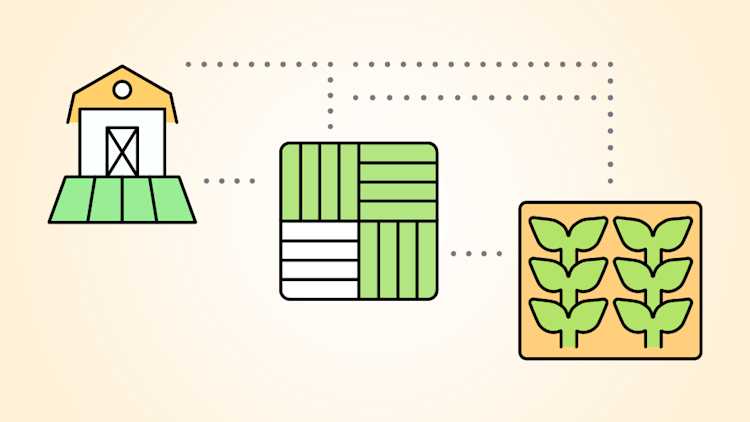Generations united: Revitalizing a family farm’s future

The following fictional case study was created by BDO.
Over three generations, the McIntyre family farm had evolved to where most of the revenue was coming from one niche crop that relied heavily on export markets, primarily into the Middle East and Pacific Rim. They were one of the few farms that concentrated on this challenging crop and over 15 years, they became very proficient at growing and selling it.
However, due to a series of geo-political events, changes in trade rules and oversupply, the market took a nosedive and the price dropped.
Then, a drought severely impacted yields and the family found themselves near bankruptcy. The operation survived, but all three generations were determined not to be vulnerable like that again.
Adapting to market shifts
At a family meeting, the first generation expressed their desire to return to commodity crops and abandon the niche enterprise. The second generation wanted to keep the niche crop but felt it shouldn’t be the primary source of revenue. The third generation, now in their late twenties, wanted to vertically integrate and go full-steam ahead with the niche crop. But instead of relying on exports through intermediaries, they suggested processing the crop themselves to add value rather than selling the raw product.
Embracing vertical integration
The youngsters, Spencer, James and Marie, had a tough sell – their parents and grandparents didn’t want to risk the farm’s future on a risky venture. The kids argued that vertical integration reduced risk. They felt they had the potential to be leaders in processing and marketing, especially since the domestic market was shifting as new Canadians sought food they enjoyed before coming to Canada.
Finding common ground
They reached a compromise – if the kids could come up with a way to start the processing venture without risking the farm’s future, the two older generations would support it. They sat down with their lawyer and accountant to hash out a plan.
They settled on a structure that would have the new processing venture in a separate corporation. It would be owned 100% by the third generation. Their lawyer urged them to segregate the potential risks the new venture might pose.
Their accountant advised them of another reason to separate the processing business from the farm. Even though it was an agricultural venture, the Canadian Revenue Agency may not view the processing business as a family farm operation. If they ran the processing business as part of the core farm, and if there were significant and growing non-farm assets in the current farm corporation, they could lose some of the favourable tax benefits available to family farming businesses.
This structure made the third generation accountable for the success or failure of the venture. They would also have full control of the business, which was a big motivator. A separate entity also forced a formalization of financial reporting and bookkeeping. There would be a transparent view of the financial performance of the venture, with no expenses hidden in the farm business.
Securing financing
Securing financing proved to be a challenge. Not surprisingly, some of the farm real estate was required as security for the new venture, and personal guarantees were needed from all three generations. Also, to help compel lenders, a pre-determined amount of seed capital would come from the existing farm operation.
Cash flow projections and a solid business plan for the new venture were... critical for strategic planning.Their current lender had concerns about the venture being tied to a niche crop. There were few other businesses or farms involved in the crop to provide benchmark production or financial comparisons. Cash flow projections and a solid business plan for the new venture were going to be critical for strategic planning and to appease lenders.
It took months of work and attention to detail to create a plan outlining the cost of facilities, an operations budget and realistic cash flow projections for the first three years. Eventually, they were able to source suitable financing.
Meeting marketing challenges
James was tasked with marketing their finished product, both in the domestic market and overseas. It was a steep learning curve to fully grasp what was required to get their new product offerings onto store shelves. Packaging, food safety protocols and labelling requirements had to be addressed.
Managing risk
They discovered that fluctuating foreign currency values posed a risk to sustainable profitability. Previously, they had accepted the potential fluctuation as a cost of doing business. However, with more risk in the operation now, Marie worked with a brokerage to develop a currency-hedging strategy.
Spencer took charge of the building project and procurement of equipment and start-up staff. He negotiated construction contracts and equipment delivery dates, investigated potential grant opportunities, and worked with their insurance company to ensure they had adequate coverage throughout the process.
Spencer, James and Marie presented their final plans to their parents and grandparents. While the first two generations were still feeling some trepidation about the venture, they were impressed and reassured by the diligence that had gone into the planning.
It was Grandpa who reminded his own children of their enthusiasm and his resistance to growing the niche crop 15 years earlier. They had taken a chance, learned from their mistakes and looked for new opportunities. The new venture was built on those principles.
The project was approved to proceed!
BDO is a trusted advisor for agricultural accounting, tax planning and business consulting.
From an AgriSuccess article.
